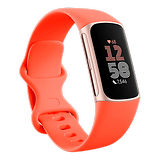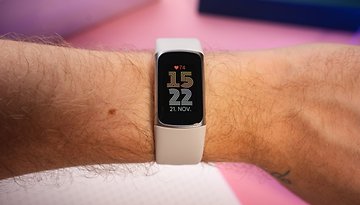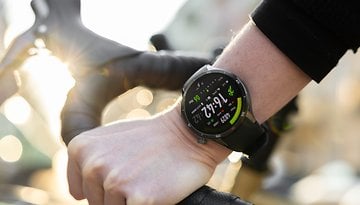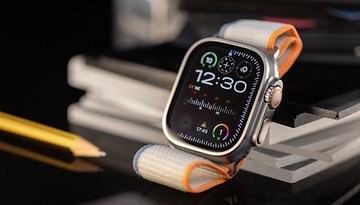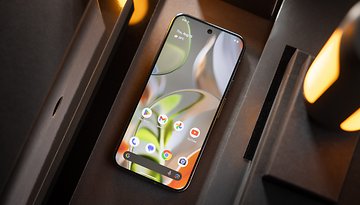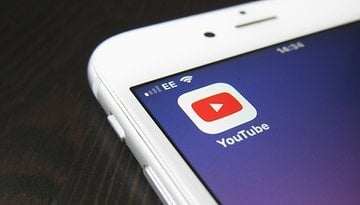Fitbit Charge 6 Review: To Buy or Not to Buy?
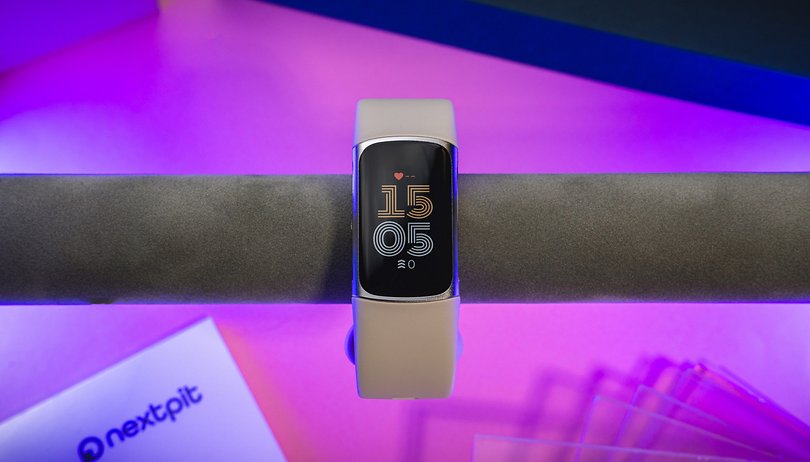

The Fitbit Charge 6 is finally able to communicate with other fitness devices! In addition, Google's latest fitness tracker is said to offer a reliable heart rate measurement, inform you of routes via Google Maps on your wrist, and offers a native app for Google Music. However, is Google lost in its own ecosystem? nexpit finds out in a review of the wearable!
Good
- Nice design with a very good display
- Easy to wear and is comfortable
- Contains many fitness functions
- Finally able to pass vital data to third-party manufacturers
Bad
- Battery life disappointed in the review
- Inaccurate GPS module with a 10% deviation
- Still too expensive and with a premium subscription
- Leaves "bite marks" on the wrist
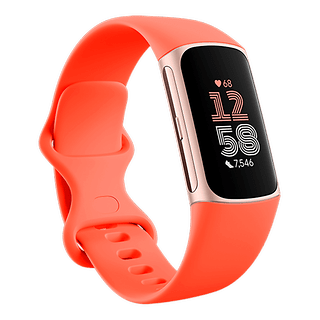
The Fitbit Charge 6 in a nutshell
Unfortunately, the Fitbit Charge 6 did not manage to iron out the weaknesses of its predecessor in our review. While the fitness tracker comes with two exciting apps, Google Maps and Google Music, but its shortcomings such as inaccurate GPS, a rather disappointing battery life, and the high price excluding the premium subscription makes the Charge 6 a rather disappointing proposition. However, if you stumble upon a good offer and love the design, you can go for it.
You can choose from three different colors if you want to pick up the Fitbit Charge 6.
Design & Display
Little has changed when it comes to the Fitbit Charge 6's design compared to its predecessor. Upon unboxing, we found a simple fitness tracker that looks as if it was made from a single piece without any buttons. It can be operated via the bright touch display and squeezing the fitness tracker. Unfortunately, the fitness tracker's wristband caused problems in our review.
Pros:
- Very high-quality workmanship.
- Also suitable for swimming thanks to the 5 ATM rating.
- Display is very easy to read.
Cons:
- Bracelet caused nasty pressure marks around the wrist in the review.
- Operation via the pressure-sensitive button takes a little getting used to.
- Wrist must significantly move to activate the display.
The boundaries between fitness trackers and smartwatches tend to be blurred these days. However, with its elongated design, the Fitbit Charge 6 can clearly be classified as a fitness tracker. The sleek design and shiny metal frame makes it look good when worn around the wrist. In addition to our "Porcelain / Aluminum Silver" color variant, Google also offers the tracker in "Obsidian / Aluminum Black" and "Coral / Aluminum Champagne Gold".
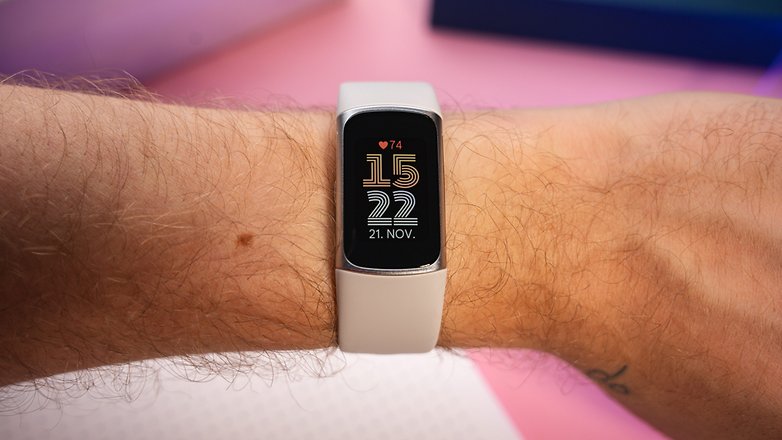
What characterized the Fitbit Charge series for several generations is operating it via a pressure-sensitive pseudo-button. You have to press the left side of the fitness tracker to return to the home screen, for instance. Fortunately, this works quite well even while wearing gloves. The Charge 6 will vibrate to let you know that the button has been successfully pressed. Personally, I prefer actual buttons with a good travel distance, but I wasn't too bothered by this mode of operation as you will get used to it.

The overall workmanship is of a very high quality. Thanks to a water protection rating of 5 ATM which qualifies it to see action up to 50 meters, you can also bring the Charge 6 with you to the swimming pool. What I found to be really unfortunate, however, is the clasp on the wristband. Firstly, it requires quite an effort to push the excess length of the closed strap between the arm and the bracelet. Secondly, this led to chafed skin and a nasty blister after wearing it for just a few days. That really shouldn't be the case with a fitness tracker that you would actually wear all the time.

However, the consolation of the Fitbit Charge 6 is its excellent display. At 1.04", it is sufficiently large, offers a really sharp display, and is also nice and bright during the day thanks to OLED technology. It also supports an always-on function, which is very draining on the battery but shows you basic information at all times. As you have to move your wrist quite a lot to activate the tracker, I found the AoD on the Fitbit Charge 6 to be really practical.
Overall, Google and Fitbit have retained the strengths of its predecessor. The Charge 6 is nice and light, robust, and has a very high-quality display. The mode of operation is fine and ultimately, it is the wristband that I found fault with. If I had to wear the Charge 6 permanently, I would buy another one, because at least it's replaceable!
Smart features
Fitbit is positioning the Charge 6 as a fitness tracker while reesrving selected smart features for its smartwatches called Versa and Sense. Nevertheless, there is now a navigation option via Google Maps with the ability for you to control music on Google Music via the Charge 6. The tracker can also display notifications, but there is no expandability via additional app installation.
Pros:
- Google Maps and Google Music are included as apps.
- Very good connection to Apple iOS too.
- Watchfaces and apps can be installed from the smartphone.
Cons:
- No further apps can be installed.
- Music integration is only limited to music control but this no longer works with Spotify and others.
- Rather fewer smart functions overall.
Google announced that it would be bringing Google Maps and Google Music to the fitness tracker with the release of the Charge 6. However, these leading new functions are not very impressive in reality. If you begin navigating via Google Maps with the Charge 6 connected, the step-by-step navigation is sent to your wrist via notifications. The fact that this only works with a connected smratphone is annoying, despite having its own GPS, but this is still somewhat understandable.
However, I no longer understand why Fitbit and Google don't even bother to integrate music storage into the fitness tracker, which costs almost $110 per year. In the end, the integration of Google Music is just a means of controlling your music playback and it becomes a problem for anyone who uses other music streaming services. This is becaues you cannot take advantage of regular music controls, which would have been much more practical. The major new functions of the sixth generation of the Charge are therefore rather disappointing in everyday use.
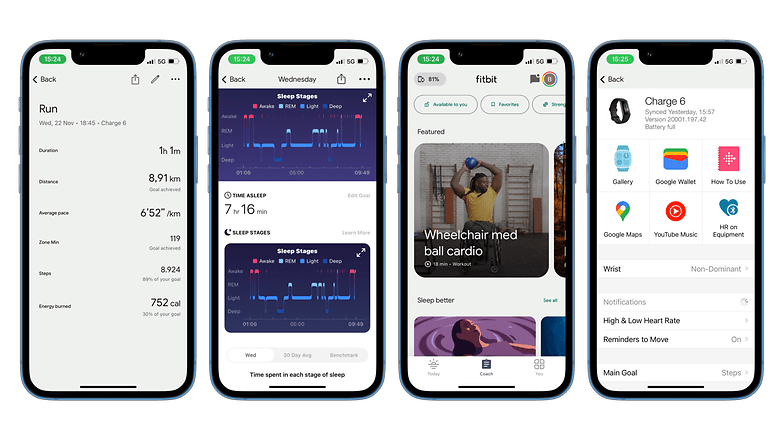
Overall, the Charge 6 isn't the smartest fitness tracker I've reviewed to date. Notifications are displayed on the wrist, but you can't react to them. It doesn't have its own app store; you can only uninstall installed apps via your smartphone. What remains are a stopwatch, a timer and an alarm clock. Well...
Synchronization with a smartphone is also really impressive with iOS. The data is usually up to date when you launch the Fitbit app. If not, you can swipe down once to initiate a refresh.
Overall, the smart functions are not what I expect from a premium fitness tracker. Sure, Fitbit has to erserve some functions for its smartwatches. Nevertheless, the range of functions here is pretty meagre.
Fitness functions and tracking
Fitbit and Google claimed to have improved the accuracy of the heart rate sensor in the Charge 6. The fitness tracker also measures your blood oxygen level, produces a digital ECG on request, helps you to become more mindful by measuring stress and now also has a skin temperature sensor. The real champion, however, is the sharing of vital data with apps and fitness devices.
Pros:
- Sharing your heart rate with other devices.
- Good range of tracking functions.
- Reliable auto-recognition of workouts.
Cons:
- GPS rather inaccurate in the review.
- Some functions are only available as a subscription.
Google and Fitbit have spared themselves from introducing new tracking functions in this version of the Charge. Instead, they claim to have improved the heart rate measurement with AI functions. Google is singing the same song here as with the Pixel 8 (review) or the Pixel 8 Pro (review).
Overall, the Charge 6 offers you a well-rounded selection of sensors. Information is presented really well in the Fitbit app. Brisk walking, cycling, or many other workouts are automatically recognized when you start moving. At the same time, the Charge 6 offers all-round tracking of skin temperature, heart rate, and blood oxygen levels. Depending on what you tick when setting up the fitness tracker, the Charge 6 will reliably help you to become more active in your everyday life.
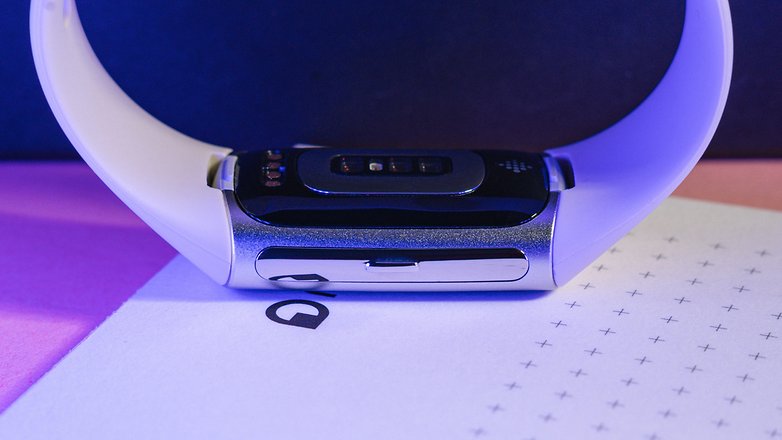
What I really like is a feature that is otherwise only available from Garmin: Sharing the recorded vital signs data with third-party devices. Peleton devices, such as the Peleton Tread that Camila reviewed recently, can measure your heart rate directly on your wrist. The same works with tracking apps like Adidas Running, and to think I used to have to use chest straps for this. Nice!
However, if you really want to get serious with sports, you will have to take out an additional subscription that costs $108.98 for the Charge 6. Fitbit Premium then offers a daily form index that tells you whether you should take a break on the day in question or whether you are performing well. The workout media library is also closed off to non-Premium customers. Fitbit Premium is and remains a major criticism of the already expensive Fitbit devices.
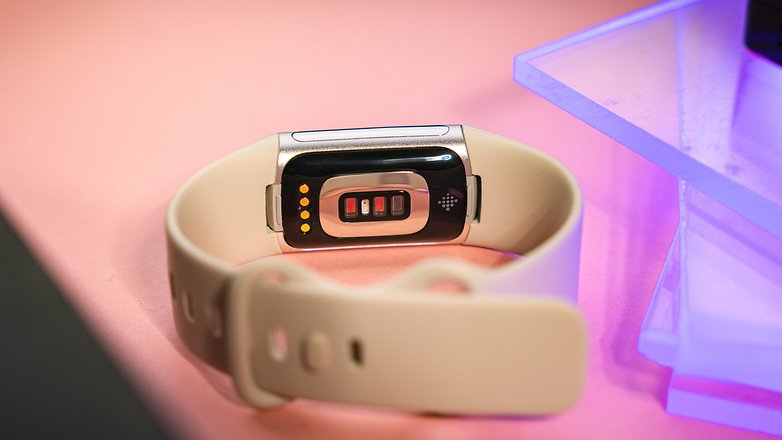
I was also disappointed by the built-in GPS. By itself, it is always practical to be able to go jogging without a smartphone. Here, however, I was missing 1.09 km from my 10 km jog. That's a deviation of almost ten percent and, given the price, I really don't understand why. Considering how Stefan already complained about similar problems with the previous model, the Fitbit Charge 5, in his review, I was disappointed to discover the issue still persists.
Overall, the Charge 6 seems interesting at first glance when it comes to tracking vital data and fitness functions. However, when worn for a longer period of time, shortcomings become apparent that simply shouldn't exist at this price point.
Battery & charging
According to the manufacturer, the Charge 6 offers a seven-day battery life. However, if you want to use the full range of functions, including regular tracking and always-on display, the runtime drops to two to three days. Although this still allows you to seamlessly track your fitness and sleep data, the price makes you resentful once again. Unfortunately, it was also very unreliable when traveling.
Pros:
- Seamless tracking thanks to multi-day battery life.
- Charger works with USB C.
- Attain 50% charge in 30 minutes.
Cons:
- Seven-day battery life is a pipe dream with continuous use.
- Proprietary charger.
- Device suddenly turned off despite having a full battery.
We are used to smartwatches offering short battery life, thanks to the Apple Watch or the Google Pixel Watch. However, fitness trackers should offer the advantage of a battery life of several days or even several weeks (take a look at the Xiaomi Band 8 review). According to the manufacturer, the Charge 6 is roughly positioned somewhere in the middle.
In practice, however, this is not achievable when using all the functions. For me, the Charge 6 lasted for two to three days with the always-on display activated, continuous tracking, and regular workouts. This is fine for me, as it allows me to carry out comprehensive tracking both during the day and at night. Charging is possible via USB C and a very mild form of quick charging is also available. You get half a battery charge in 30 minutes. A full charge takes one and a half to two hours.
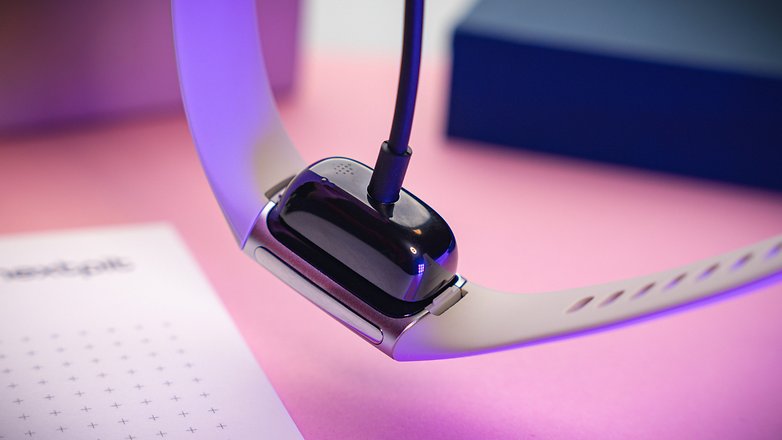
Fitbit still uses a proprietary charger that attaches itself magnetically to the fitness tracker. I actually find this solution to be quite elegant, but you can't fall back on wireless charging if you forget the charger. And that was exactly my undoing.
I had to take the Charge 6 with me on a business trip during the review period and charged it to 100 percent. During the course of the day, however, I noticed that the tracker had run out of power and so my fitness tracking came to an end. This unreliability is annoying and, and we'll sing the same tune again, a bugbear that simply shouldn't happen at such a high price. ?
Conclusion
Let's take a look back at the previous model: In Stefan's review, the Charge 5 revealed some weaknesses and only achieved a 3.5-star rating. He described it as a "fitness tracker that wanted too much". So this year, Google had the opportunity to improve the flaws after the design update. And, of all things, we wanted even more.
The result is a fitness tracker that you really have to fall in love with to be able to live with its drawbacks. We pay $160 for a device and then have to sign up for a subscription to access all the functions. In everyday use, we can expect an inaccurate GPS, which showed a deviation of 10 percent in the review. The battery life lasted for two to three days instead of the promiesd seven days. And for no reason whatsoever, the tracker refused to work during the review test and switched itself off indefinitely.
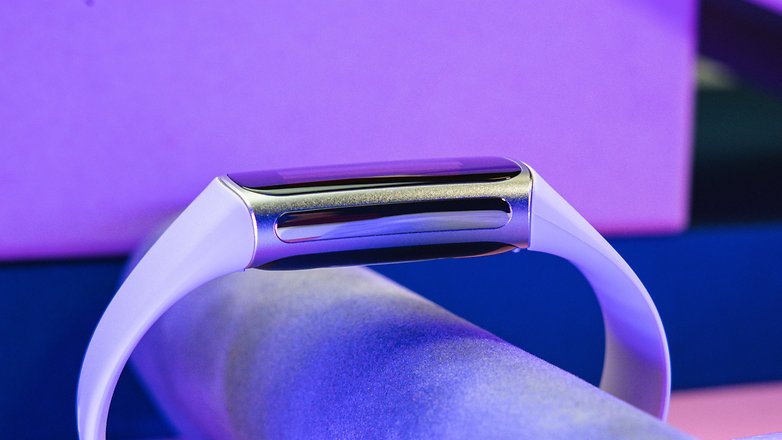
While all of these are annoying, it is not all doom and gloom. You get a really good display and a nice design. The fact that Google may also pass on the vital data to third-party manufacturers is another plus.
Despite these new features, I present you with our list of the best fitness trackers on the market. Going through the list, it raises the question of why some tech colleagues consider the Charge 6 to be the best fitness tracker available on the market and I would like to conclude with a final note:
The fact that the Charge 6 left bite marks on my arm after just two days was probably a bad premonition. Fitbit hasn't got its "premium tracker" under control in this generation either and should really get a grip on teething problems after six generations.
